
Ronda: The Jewel of Andalucía
Discover Ronda, a mesmerizing city in Andalucía, Spain, where dramatic landscapes, historic landmarks, and vibrant culture converge high above the El Tajo gorge.
Ronda, perched high above the El Tajo gorge, offers breathtaking views and a blend of rich history and vibrant culture. This charming city in the heart of Andalucía is known for its dramatic landscapes, with the Puente Nuevo bridge spanning the deep chasm, connecting the old town, La Ciudad, with the newer part, El Mercadillo. Ronda's roots trace back to the Roman and Moorish periods, and this is evident in its architecture and layout. Wander through the cobbled streets of the old town, where you'll find ancient city walls, the Mondragón Palace, and the historic Plaza de Toros, one of the oldest bullrings in Spain. The city's museums, such as the Museo Lara and the Ronda Bullring Museum, offer insights into its storied past. Nature lovers will appreciate the surrounding Serranía de Ronda mountains, perfect for hiking and exploring. Ronda’s diverse landscapes also include lush valleys and vineyards, where local wineries offer tours and tastings of their exquisite wines. The city's culinary scene is equally captivating, with traditional tapas bars and fine dining restaurants showcasing the best of Andalusian cuisine.
Local tips in Ronda
- Visit early in the morning or late in the afternoon to avoid crowds at Puente Nuevo and capture the best photos.
- Wear comfortable shoes; Ronda's cobbled streets and hilly terrain can be challenging for walking.
- Try the local dish, Rabo de Toro (oxtail stew), in one of the traditional eateries.
- Explore the nearby white villages (Pueblos Blancos) for a day trip to experience more of the region’s charm.
- Book a guided tour to learn more about the city's history and hidden gems from a local perspective.
- Check the local event calendar for festivals and cultural events that might be happening during your visit.
Ronda: The Jewel of Andalucía
Ronda, perched high above the El Tajo gorge, offers breathtaking views and a blend of rich history and vibrant culture. This charming city in the heart of Andalucía is known for its dramatic landscapes, with the Puente Nuevo bridge spanning the deep chasm, connecting the old town, La Ciudad, with the newer part, El Mercadillo. Ronda's roots trace back to the Roman and Moorish periods, and this is evident in its architecture and layout. Wander through the cobbled streets of the old town, where you'll find ancient city walls, the Mondragón Palace, and the historic Plaza de Toros, one of the oldest bullrings in Spain. The city's museums, such as the Museo Lara and the Ronda Bullring Museum, offer insights into its storied past. Nature lovers will appreciate the surrounding Serranía de Ronda mountains, perfect for hiking and exploring. Ronda’s diverse landscapes also include lush valleys and vineyards, where local wineries offer tours and tastings of their exquisite wines. The city's culinary scene is equally captivating, with traditional tapas bars and fine dining restaurants showcasing the best of Andalusian cuisine.
When is the best time to go to Ronda?
Iconic landmarks you can’t miss
Centro de Interpretación del Puente Nuevo
Explore the rich history and stunning architecture of Ronda's iconic Puente Nuevo at the Centro de Interpretación, a must-see attraction for every traveler.

Puerta de Almocábar
Explore Ronda's historic Puerta de Almocábar – a stunning gateway to the past with breathtaking views of Andalusia's landscapes.
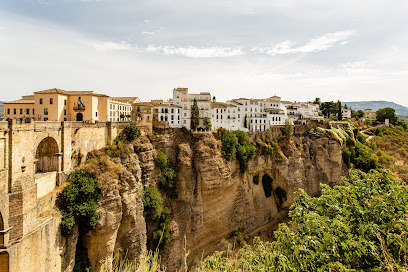
Alameda del Tajo
Experience the beauty of nature and stunning vistas at Alameda del Tajo in Ronda, a must-visit park that captures the essence of Spanish culture.
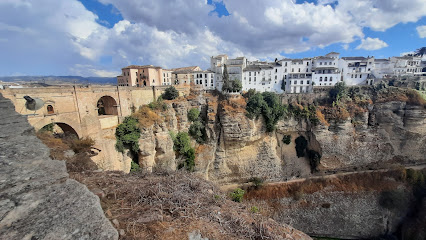
Arab Baths Archaeological Site
Explore the Arab Baths Archaeological Site in Ronda, a preserved marvel of Moorish architecture and culture, offering a unique glimpse into Spain's rich history.

Parador de Ronda
Immerse yourself in luxury and history at Parador de Ronda, where stunning views and exquisite dining converge in the heart of Andalusia.

El Tajo de Ronda
Discover the breathtaking El Tajo de Ronda, a stunning gorge featuring iconic views, rich history, and thrilling hiking adventures in the heart of Andalusia.

Mirador de Ronda
Discover the stunning vistas of Mirador de Ronda, where breathtaking views meet rich history in the heart of Andalusia.
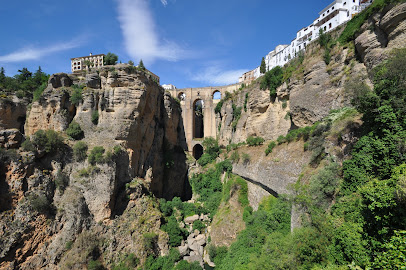
Museo Lara
Explore the eclectic treasures of Museo Lara in Ronda, a must-visit for history buffs and culture enthusiasts alike.
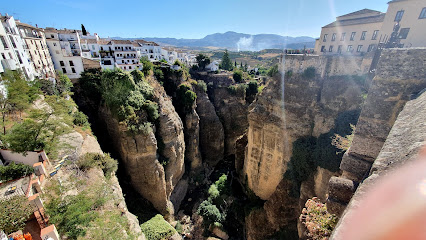
La Casa del Rey Moro
Explore La Casa del Rey Moro, a stunning heritage museum in Ronda, Spain, showcasing breathtaking gardens and rich historical significance.
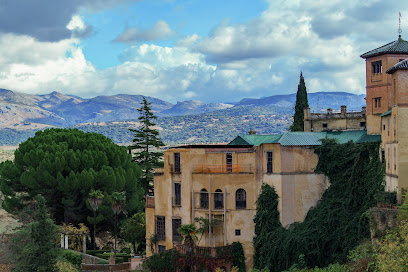
Puente Nuevo Viewpoint
Explore the breathtaking views at Puente Nuevo Viewpoint in Ronda, a stunning blend of nature and history in the heart of Spain.
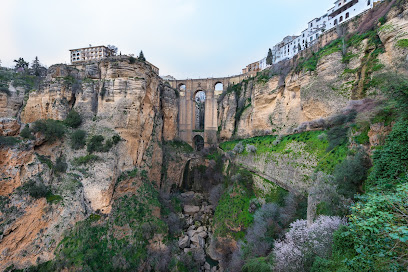
Bullring of the Royal Cavalry of Ronda
Discover the rich traditions of bullfighting and equestrian arts at Ronda's iconic Bullring of the Royal Cavalry, a must-visit cultural attraction.
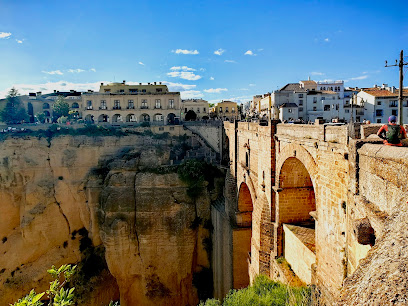
Mondragon Palace
Explore the rich history and beautiful gardens of Mondragon Palace in Ronda, a captivating local history museum that brings the past to life.
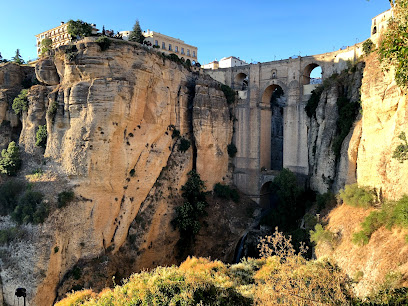
Puerta Grande
Discover the heart of Ronda's culinary scene at Puerta Grande, where traditional Mediterranean and Spanish cuisine come to life in a vibrant atmosphere.
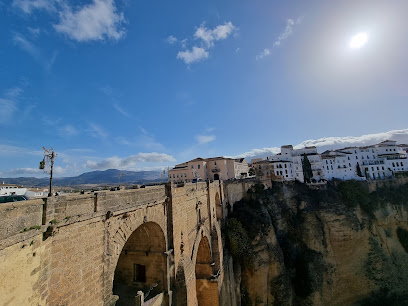
Puente Viejo
Explore the stunning Puente Viejo in Ronda, a historical landmark bridging the town's past and present with breathtaking views and rich architectural beauty.
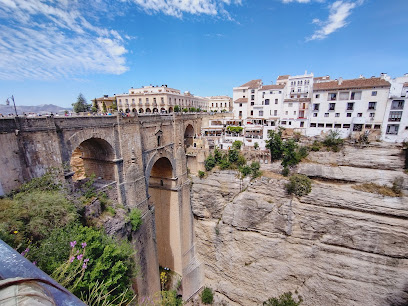
Restaurante Abades Ronda
Experience the best of Andalusian cuisine at Restaurante Abades Ronda, where stunning views meet exquisite Mediterranean flavors.
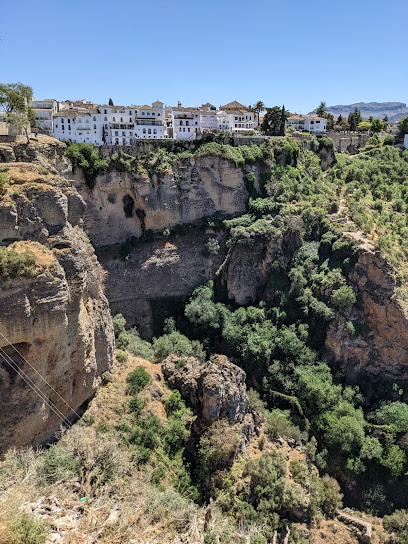
Unmissable attractions to see
Puente Nuevo. Centro de Interpretación
Experience the breathtaking beauty and rich history of Ronda's iconic Puente Nuevo, a magnificent bridge that connects two cliffs and offers stunning views.
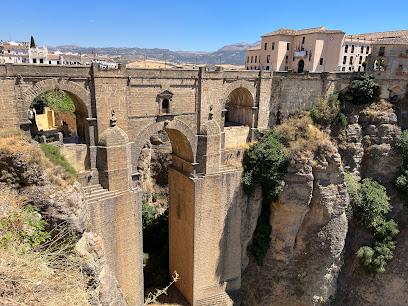
Caminito del Rey . North Access
Explore El Caminito del Rey in Málaga, Spain – a scenic hiking trail that offers stunning views and an unforgettable adventure through nature.
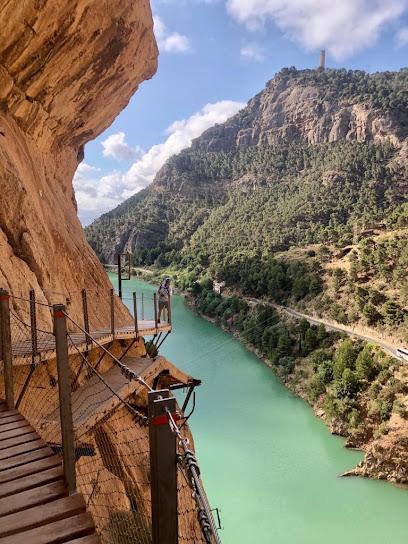
Puerto Banús. Puerto Deportivo de Lujo en Marbella
Discover the luxury and vibrancy of Puerto Banús, Marbella's premier marina with stunning yachts, exquisite dining, and lively nightlife.
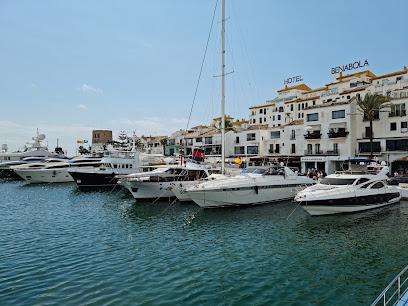
Plaza de los Naranjos
Experience the vibrant atmosphere and rich history at Plaza de los Naranjos, Marbella's enchanting heart, filled with culture, cuisine, and charm.
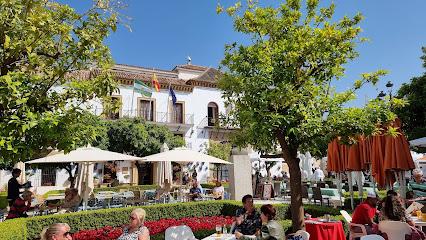
Sierra de Grazalema Natural Park
Experience the breathtaking beauty of Sierra de Grazalema Natural Park, a UNESCO Biosphere Reserve, perfect for hiking, wildlife spotting, and exploring nature.
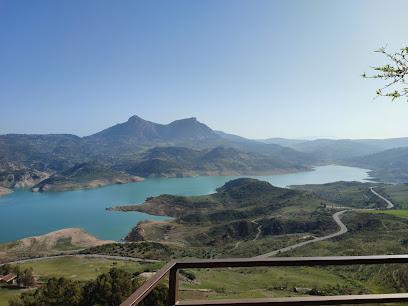
Parque de la Alameda
Explore the tranquil beauty of Parque de la Alameda in Marbella, a lush park with vibrant gardens, historical monuments, and scenic pathways for every visitor.
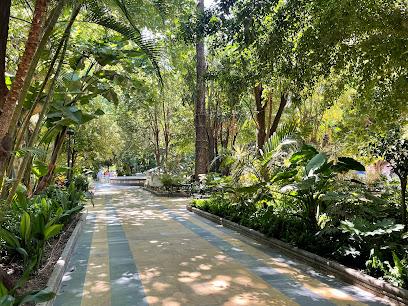
Selwo Aventura
Experience the thrill of wildlife at Selwo Aventura in Estepona, Málaga, where adventure meets conservation in a stunning natural setting.

Puerto Deportivo de Marbella
Experience the beauty and vibrancy of Puerto Deportivo de Marbella, where luxury meets leisure on the stunning Costa del Sol.
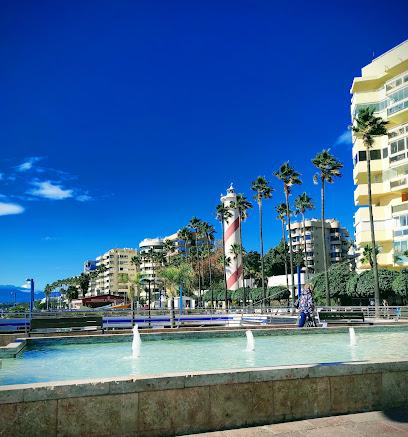
Estepona Orchid House
Discover the enchanting Estepona Orchid House, a stunning botanical garden with thousands of exotic orchids and tropical plants in the heart of Estepona, Spain.
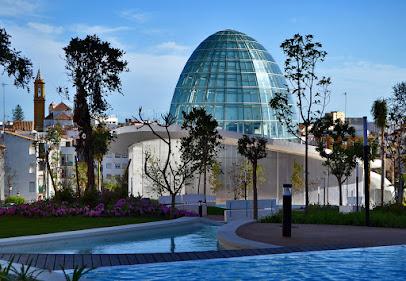
Cueva del Gato
Explore the stunning Cueva del Gato in Benaoján, Málaga—an ecological paradise filled with breathtaking landscapes and rich biodiversity.
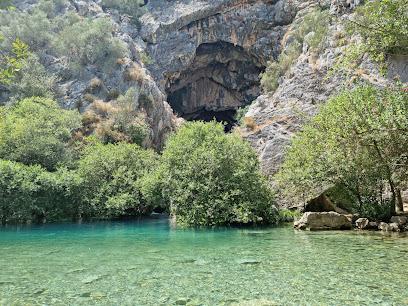
Puerta de Almocábar
Discover the majestic Puerta de Almocábar, a historic gateway in Ronda, where Andalusian charm meets rich Moorish heritage in stunning surroundings.
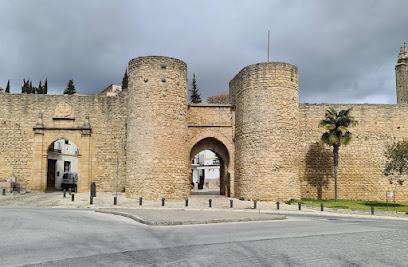
Playa del Cristo
Experience the breathtaking beauty of Playa del Cristo, a serene beach in Estepona, Málaga, perfect for relaxation, watersports, and culinary delights.
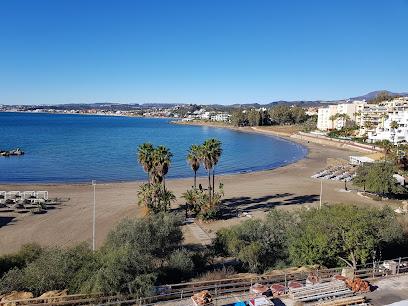
Sendero Río Majaceite
Explore the stunning Sendero Río Majaceite hiking trail in Cádiz, where nature's beauty and tranquil rivers await every outdoor enthusiast.

Puerto Deportivo de Estepona
Explore Puerto Deportivo de Estepona, a vibrant marina offering stunning views, exciting water activities, and delightful dining experiences on the Costa del Sol.
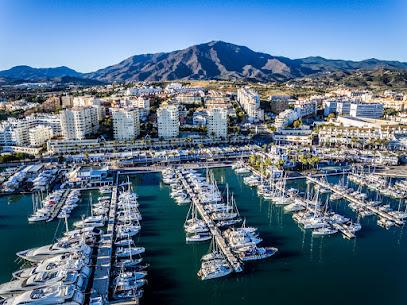
Mirador de Ronda
Discover the stunning views and rich history at Mirador de Ronda, a must-see scenic spot in Ronda, Málaga, renowned for its iconic bridge and picturesque landscapes.
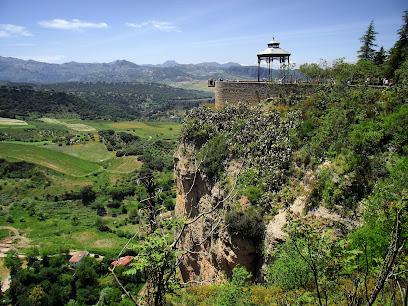
Essential places to dine
El Lechuguita
Discover El Lechuguita in Ronda: A vibrant tapas bar offering authentic Spanish cuisine in a cozy atmosphere perfect for food lovers.

Las Maravillas
Experience authentic Mediterranean flavors at Las Maravillas in Ronda – a perfect blend of tradition and taste in every bite.
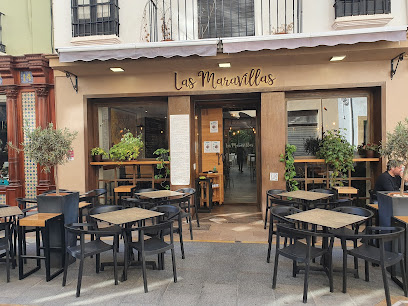
Bodega San Francisco
Experience authentic Mediterranean cuisine at Bodega San Francisco in Ronda, where delicious tapas meet a warm local atmosphere.
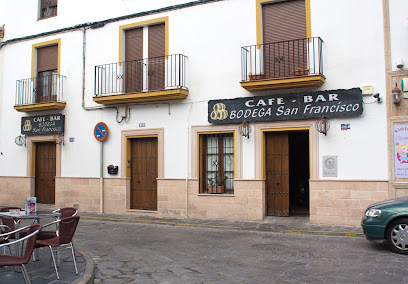
Bar La Taberna
Experience authentic Spanish tapas at Bar La Taberna in Ronda - where local flavors meet vibrant atmosphere.
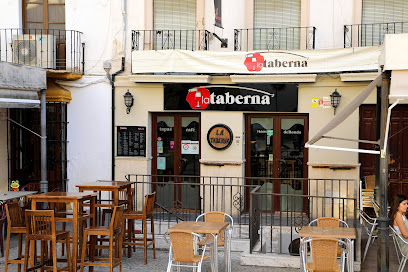
Bar Siempre Igual Ronda
Discover the heart of Andalusian cuisine at Bar Siempre Igual Ronda – where every tapa is a celebration of flavor and tradition.
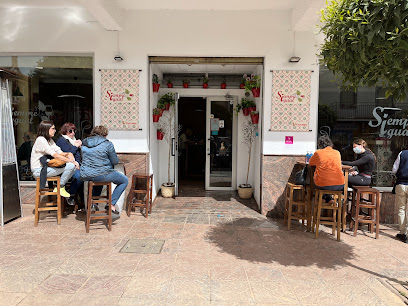
Tragatá | Benito Gómez | Ronda
Experience authentic Spanish tapas at Tragatá in Ronda - where every bite tells a story.
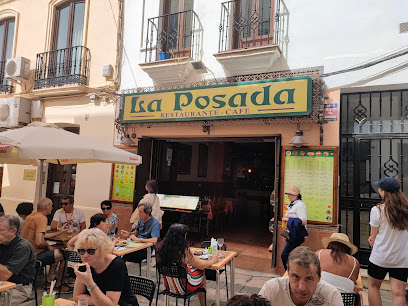
Restaurante Bar de tapas Camelot
Discover the authentic taste of Spain at Restaurante Bar de Tapas Camelot in Ronda – where vibrant flavors meet a warm atmosphere.

Restaurante Tropicana
Experience authentic Mediterranean cuisine at Restaurante Tropicana in Ronda—where every dish tells a story.
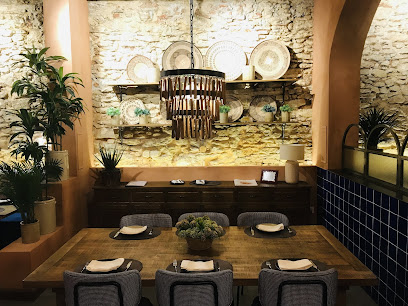
Restaurante Casa María
Experience authentic Andalusian flavors at Restaurante Casa María in Ronda - where tradition meets taste.
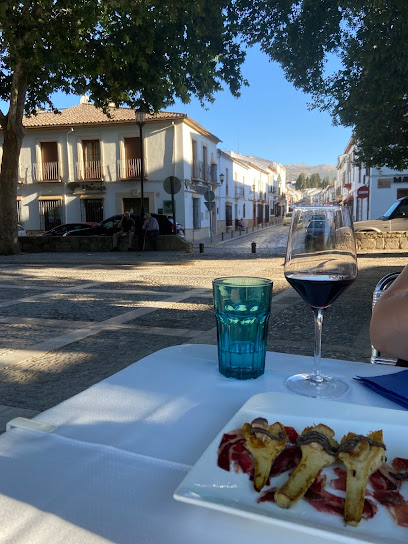
La Niña Adela
Experience the essence of Andalusian cuisine at La Niña Adela - your go-to tapas bar in Ronda for authentic flavors and a cozy atmosphere.
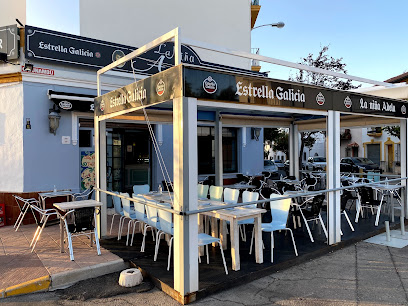
Mesón El Sacristán
Experience authentic Spanish flavors at Mesón El Sacristán in Ronda—where every meal is a celebration of culinary tradition.
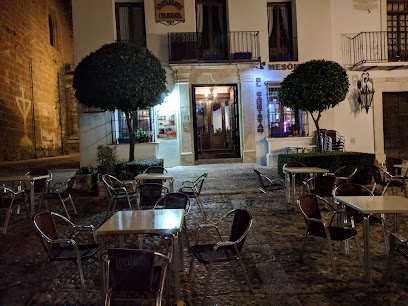
Puerta Grande
Discover the culinary delights at Puerta Grande in Ronda - where Mediterranean flavors meet Spanish tradition.
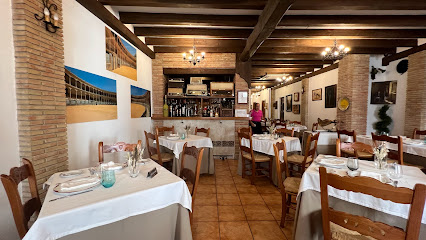
Il Forno a Legna
Experience authentic Italian dining at Il Forno a Legna in Ronda – where delicious wood-fired pizzas meet warm hospitality.
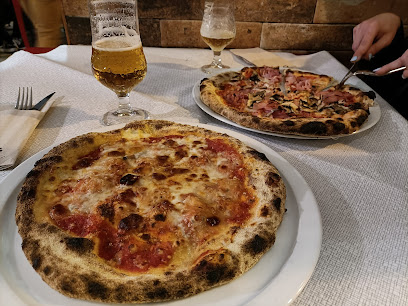
Taberna Quinto Tramo
Savor traditional Andalusian flavors at Taberna Quinto Tramo in Ronda – a culinary gem offering authentic Spanish dishes in a charming atmosphere.

Toro Tapas Ronda
Experience authentic Andalusian flavors at Toro Tapas in Ronda—where every bite is a celebration of Spain's rich culinary heritage.
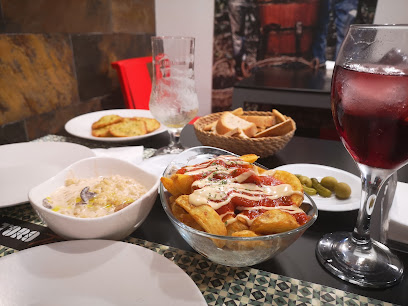
Markets, malls and hidden boutiques
Decathlon City Ronda
Explore Decathlon City Ronda for top-notch sporting goods and gear up for outdoor adventures in the stunning landscapes of Ronda, Spain.

Primor
Discover a world of beauty at Primor in Ronda, where exquisite perfumes and cosmetics await every beauty enthusiast.
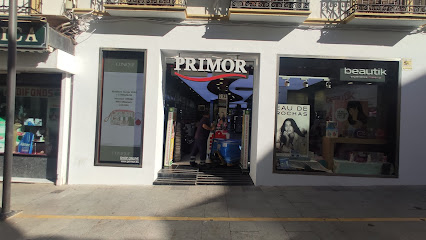
Stradivarius
Discover the latest trends in women's fashion at Stradivarius, Ronda's premier clothing store for trendy and affordable styles.
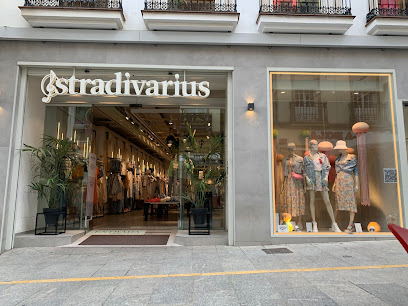
Arena Games
Explore Arena Games in Ronda, a vibrant hub for gamers and collectors, offering an extensive selection of games, toys, and collectibles for all ages.
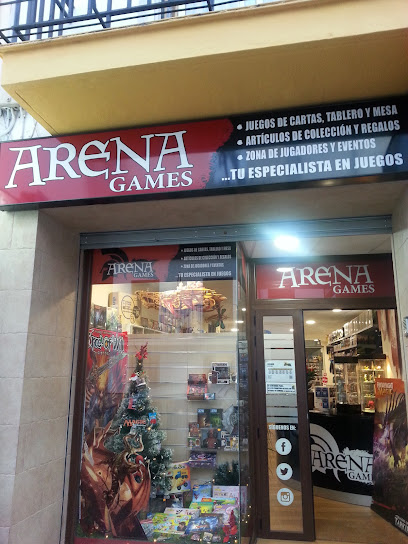
El Pensamiento
Discover unique gifts, toys, and home goods at El Pensamiento, a charming gift shop in Ronda, Málaga, perfect for tourists seeking memorable souvenirs.
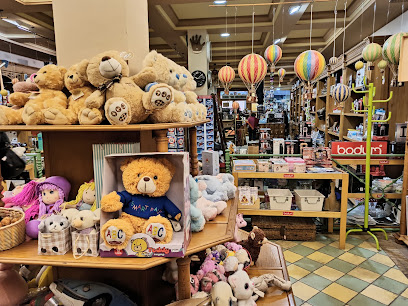
ALE-HOP
Explore ALE-HOP in Ronda: A vibrant gift shop with unique souvenirs and novelties that capture the spirit of your travels.
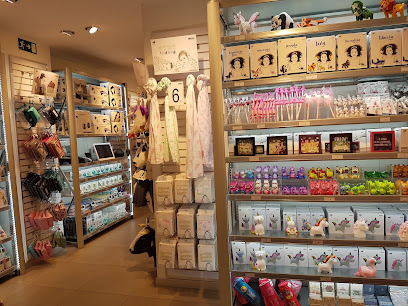
CALIFORNIA TEXTIL
Explore California Textil in Ronda, a vibrant shopping mall offering unique local products and a taste of Andalusian culture.
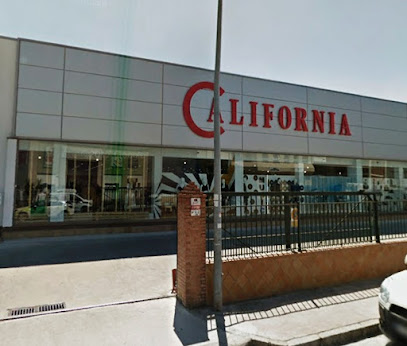
La Tienda de Trinidad
Experience the authentic tastes of Spain at La Tienda de Trinidad, Ronda's premier cured ham bar and wine cellar for culinary delights.
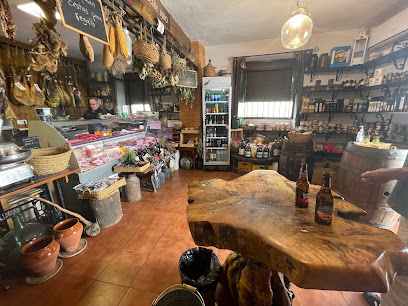
Maria Cultivo Grow Shop, CBD & Vaper
Discover premium CBD products and vaporizers at Maria Cultivo Grow Shop, Ronda’s go-to destination for cannabis enthusiasts.

La alacena de Santi & lo mejor del Té
Experience the essence of tea culture at La Alacena de Santi in Ronda, Málaga, where every cup tells a story.
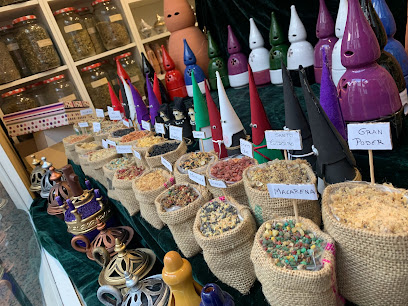
Sabor a España
Discover the culinary treasures of Spain at Sabor a España, a gourmet grocery store in Ronda offering exquisite chocolates and local delicacies.
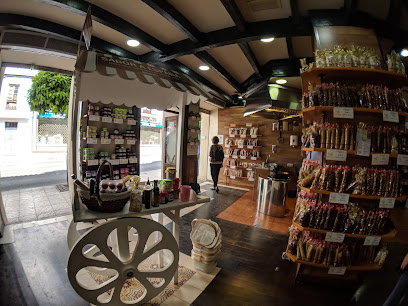
Queso y Jamón Boutique Ronda
Discover the essence of Spanish cuisine at Queso y Jamón Boutique Ronda, where exceptional cured meats and cheeses await.
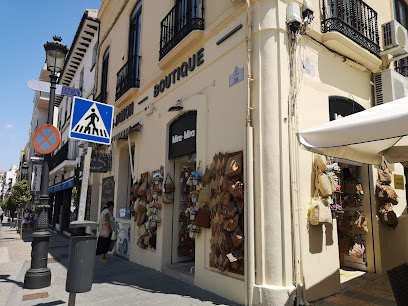
Ronda gourmet
Discover the flavors of Ronda at Ronda Gourmet, where gourmet groceries meet exquisite wine in a charming atmosphere.
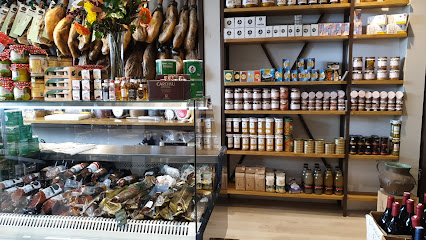
Picola
Explore Picola in Ronda for stylish children's clothing that combines comfort and local craftsmanship in a charming shopping experience.
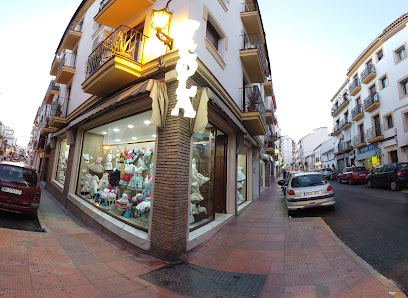
Viuda De Cipriano
Explore Viuda De Cipriano in Ronda for unique souvenirs and gifts that embody the spirit of Andalusia, crafted by local artisans.

Essential bars & hidden hideouts
El Lechuguita
Discover the vibrant flavors of Spain at El Lechuguita, Ronda's favorite tapas bar, where every dish tells a story of culinary tradition.
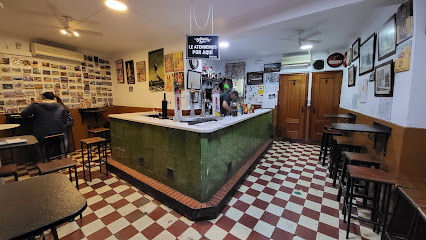
Bar La Taberna
Experience authentic Spanish tapas and local wines at Bar La Taberna in Ronda, where every bite tells a story of Andalusian heritage.
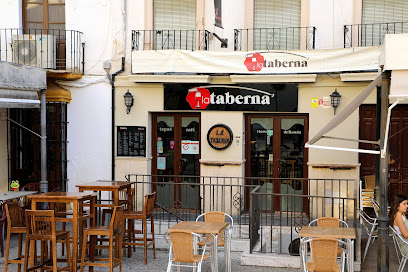
Bar Siempre Igual Ronda
Experience the essence of Spanish cuisine at Bar Siempre Igual Ronda, where every bite is a celebration of flavor in a vibrant setting.
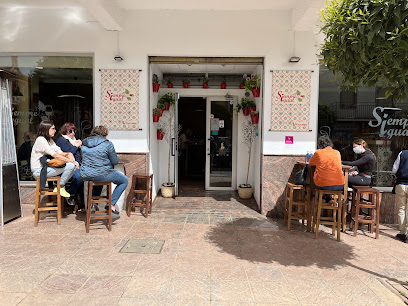
Tabanco Los Arcos
Discover the heart of Ronda at Tabanco Los Arcos, where exquisite local wines and delectable tapas await in a charming setting.
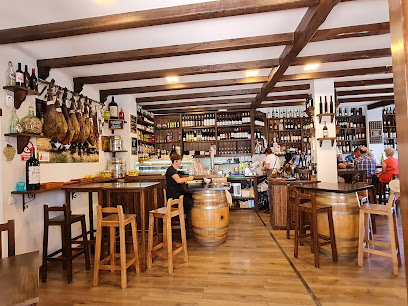
Taberna El Almacén
Discover the essence of Andalusian cuisine at Taberna El Almacén in Ronda, where traditional flavors meet a warm, welcoming atmosphere.
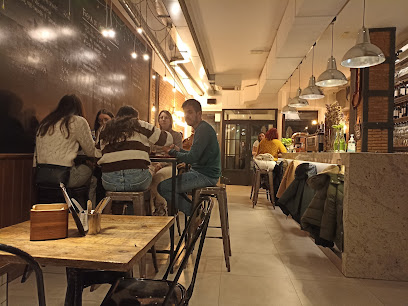
Entre Vinos
Discover the best local wines and authentic tapas at Entre Vinos in Ronda, where every sip tells a story of Andalusian heritage.
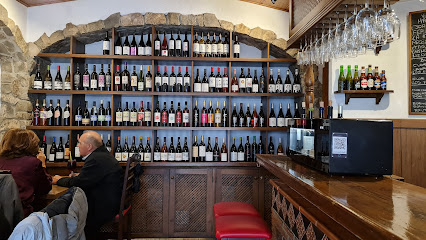
Bar El Convento
Experience the essence of Spanish cuisine at Bar El Convento in Ronda, where tapas and fine wines await in a vibrant atmosphere.
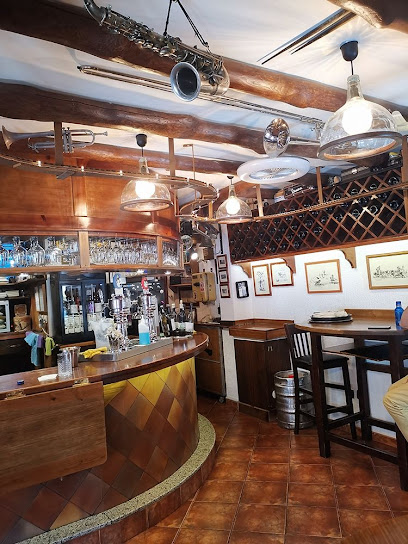
Bar Alegria ronda
Experience the vibrant flavors of Andalusia at Bar Alegria Ronda, where grilled specialties and local tapas await in a friendly atmosphere.
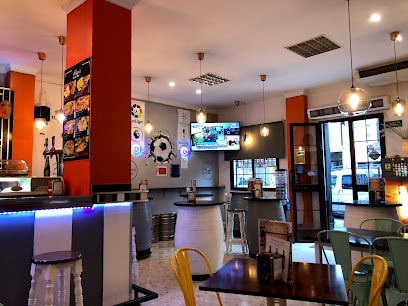
Drinks&co.
Discover the lively atmosphere and exceptional drinks at Drinks&co., Ronda's favorite pub for an unforgettable night out.
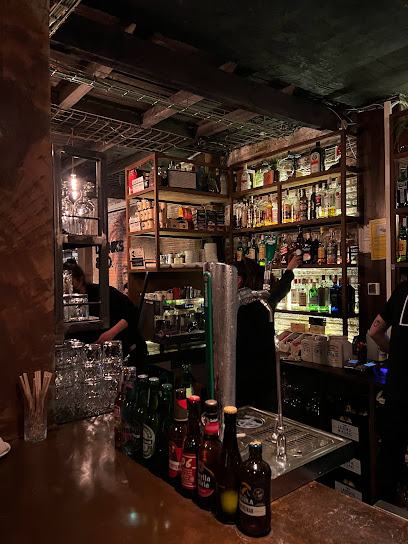
Pub dulcinea
Discover the heart of Ronda at Pub Dulcinea, a charming pub offering authentic Spanish drinks and a vibrant atmosphere for tourists and locals alike.
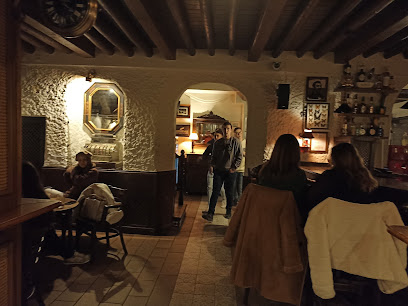
Bar Sánchez
Experience authentic Andalusian cuisine at Bar Sánchez, a beloved tapas bar in the heart of Ronda, Málaga, where flavors come alive.
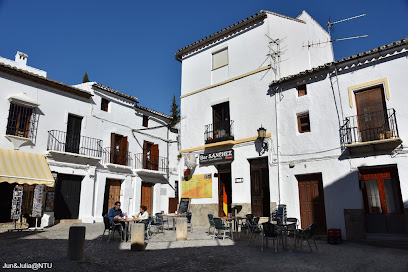
HEAVEN IRISH TAVERN
Discover the lively atmosphere of Heaven Irish Tavern, where Irish charm meets Spanish hospitality in the heart of Ronda.
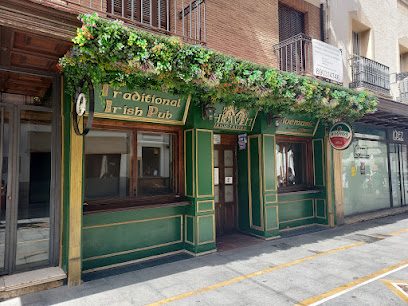
Bar El Semáforo
Discover the vibrant flavors of Andalusia at Bar El Semáforo in Ronda, where friendly service and delicious tapas await.
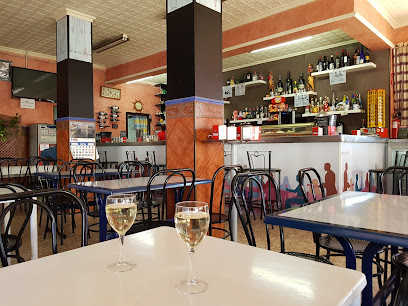
Pub Longplay Ronda
Experience the best of Ronda's nightlife at Pub Longplay, where live piano music and a warm atmosphere await you.
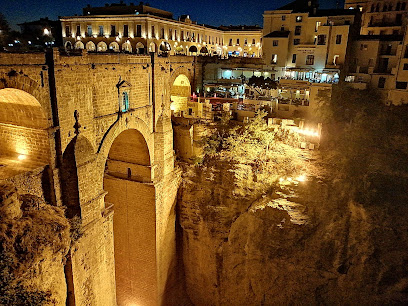
Bar La Taska
Discover the vibrant flavors of Ronda at Bar La Taska, a charming bar and restaurant offering authentic tapas and an inviting atmosphere.
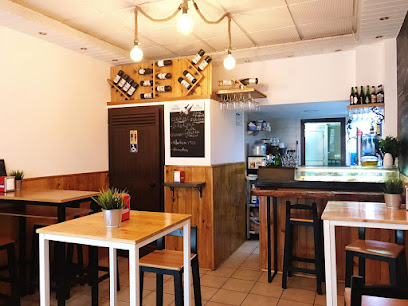
Travel experiences inspired by this city
Explore more travel diariesLocal Phrases
-
- HelloHola
[o-la] - GoodbyeAdiós
[a-di-ós] - YesSí
[sí] - NoNo
[no] - Please/You're welcomePor favor/De nada
[por fa-vor/de na-da] - Thank youGracias
[gra-cias] - Excuse me/SorryPerdón/Lo siento
[per-dón/lo sien-to] - How are you?¿Cómo estás?
[¿có-mo es-tás?] - Fine. And you?Bien. ¿Y tú?
[bien. ¿y tú?] - Do you speak English?¿Hablas inglés?
[¿ha-blas in-glés?] - I don't understandNo entiendo
[no en-tien-do]
- HelloHola
-
- I'd like to see the menu, pleaseMe gustaría ver la carta, por favor
[me gus-ta-ría ver la car-ta, por fa-vor] - I don't eat meatNo como carne
[no co-mo car-ne] - Cheers!¡Salud!
[¡sa-lud!] - I would like to pay, pleaseMe gustaría pagar, por favor
[me gus-ta-ría pa-gar, por fa-vor]
- I'd like to see the menu, pleaseMe gustaría ver la carta, por favor
-
- Help!¡Ayuda!
[¡a-yu-da!] - Go away!¡Vete!
[¡ve-te!] - Call the Police!¡Llama a la policía!
[¡ya-ma a la po-li-cía!] - Call a doctor!¡Llama a un médico!
[¡ya-ma a un mé-di-co!] - I'm lostEstoy perdido/a
[es-toy per-di-do/a] - I'm illEstoy enfermo/a
[es-toy en-fer-mo/a]
- Help!¡Ayuda!
-
- I'd like to buy...Me gustaría comprar...
[me gus-ta-ría com-prar...] - I'm just lookingSolo estoy mirando
[so-lo es-toy mi-ran-do] - How much is it?¿Cuánto cuesta?
[¿cuan-to cues-ta?] - That's too expensiveEsto es demasiado caro
[es-to es de-ma-sia-do ca-ro] - Can you lower the price?¿Puedes bajar el precio?
[¿pue-des ba-jar el pre-cio?]
- I'd like to buy...Me gustaría comprar...
-
- What time is it?¿Qué hora es?
[¿qué ho-ra es?] - It's one o'clockEs la una
[es la u-na] - Half past (10)Las diez y media
[las diez y me-dia] - MorningMañana
[ma-ña-na] - AfternoonTarde
[tar-de] - EveningNoche
[no-che] - YesterdayAyer
[a-yer] - TodayHoy
[hoy] - TomorrowMañana
[ma-ña-na] - 1Uno
[u-no] - 2Dos
[dos] - 3Tres
[tres] - 4Cuatro
[cua-tro] - 5Cinco
[cin-co] - 6Seis
[seis] - 7Siete
[sie-te] - 8Ocho
[o-cho] - 9Nueve
[nue-ve] - 10Diez
[diez]
- What time is it?¿Qué hora es?
-
- Where's a/the...?¿Dónde está un/el...?
[¿dón-de es-tá un/el...?] - What's the address?¿Cuál es la dirección?
[¿cual es la di-rec-ción?] - Can you show me (on the map)?¿Puedes mostrarme (en el mapa)?
[¿pue-des mos-trar-me (en el ma-pa)?] - When's the next (bus)?¿Cuándo es el próximo (autobús)?
[¿cuan-do es el pró-xi-mo (au-to-bús)?] - A ticket (to ....)Un billete (a ....)
[un bi-lle-te (a ....)]
- Where's a/the...?¿Dónde está un/el...?
History of Ronda
-
Ronda, located in the province of Málaga, Spain, has a rich history that dates back to the 6th century BC. The city was originally established by the Celts and later inhabited by the Phoenicians and Romans, who called it 'Acinipo.' The remnants of the Roman amphitheater and other archaeological sites still stand as a testament to its ancient origins.
-
Ronda flourished under Moorish rule from the 8th to the 15th century. The Moors named the city 'Izna-Rand Onda' and transformed it into a thriving cultural and economic center. The iconic Puente Arabe (Arab Bridge) and the Baños Árabes (Arab Baths) are some of the spectacular remnants of this era. The city's intricate architecture and urban planning were deeply influenced by Islamic art and culture.
-
Ronda was reconquered by the Catholic Monarchs, Ferdinand and Isabella, in 1485. This period marked significant changes in the city's structure and governance, including the conversion of mosques into churches, such as the Iglesia de Santa María la Mayor. The reconquest also led to the construction of the Puente Nuevo (New Bridge), which is now one of Ronda's most famous landmarks.
-
During the 18th and 19th centuries, Ronda became notorious for its bandoleros or bandits. These outlaws roamed the rugged terrain of the Serranía de Ronda, making daring raids and becoming folk heroes in the process. The Bandolero Museum in Ronda captures this turbulent yet fascinating period of the city's history, showcasing artifacts and stories of these infamous figures.
-
Ronda is often credited as the birthplace of modern bullfighting. The Real Maestranza de Caballería de Ronda, built in 1785, is one of Spain's oldest bullrings and a significant cultural monument. The annual Goyesca bullfights, held in September, honor the legendary bullfighter Pedro Romero and are a major highlight of the city's cultural calendar.
-
In the 19th century, Ronda became a magnet for Romantic writers and travelers, including Washington Irving and Ernest Hemingway. These literary figures were captivated by the city's dramatic landscapes, historical depth, and vibrant culture. Hemingway famously wrote about Ronda in his novel 'For Whom the Bell Tolls,' further cementing its allure in the literary world.
-
Today, Ronda is a picturesque city that seamlessly blends its rich historical heritage with modern amenities. The city's well-preserved monuments, charming streets, and stunning natural scenery attract visitors from around the world. Festivals such as the Feria de Pedro Romero and Semana Santa offer a glimpse into the city's enduring traditions and vibrant community life.
Ronda Essentials
-
Ronda is located in the province of Málaga in Andalusia, Spain. The nearest international airport is Málaga-Costa del Sol Airport, approximately 100 kilometers away. From Málaga, you can take a bus directly to Ronda, which typically takes around 2 hours. Alternatively, you can rent a car and drive, enjoying the scenic routes through the Andalusian countryside. Trains are also available from major cities like Madrid and Málaga, offering a comfortable and picturesque journey.
-
Ronda is a small city, and many of its attractions are within walking distance from each other. Local buses operate within the city and can be a convenient option for getting around. Taxis are readily available and relatively inexpensive. If you prefer exploring at your own pace, renting a car is a good option, especially for visiting nearby villages and natural parks. Parking can be limited in the historic center, so consider using parking facilities on the outskirts and walking into the city.
-
The official currency in Spain is the Euro (EUR). Credit cards are widely accepted in hotels, restaurants, and shops in Ronda. However, it is advisable to carry some cash, especially for smaller establishments and local markets. ATMs are plentiful in the city, allowing you to withdraw euros as needed. It is recommended to inform your bank about your travel to avoid any issues with card transactions.
-
Ronda is generally a safe destination for tourists. However, like any travel destination, it is wise to take standard precautions. Avoid walking alone at night in unfamiliar areas and always keep an eye on your belongings, especially in crowded places like markets or festivals. There are no specific high-crime areas targeting tourists, but staying aware of your surroundings is always best practice.
-
In case of emergency, dial 112 for immediate assistance, which connects you to police, medical, and fire services. Ronda has a local police station and medical facilities, including a hospital for more serious health issues. It is recommended to have travel insurance that covers medical emergencies. Pharmacies are available in the city for minor health issues, where you can purchase over-the-counter medications.
-
Fashion: Do dress comfortably and wear sturdy shoes, as Ronda's cobblestone streets can be challenging. Avoid overly casual clothing when dining out in nicer restaurants. Religion: Do respect local customs and traditions, especially when visiting churches. Wear modest clothing and cover your shoulders. Public Transport: Do be respectful and give up your seat to elderly passengers. Don't eat or drink on public transport. Greetings: Do greet people with a friendly 'Hola' or 'Buenos días'. A handshake is common in professional settings. Eating & Drinking: Do try local dishes like 'rabo de toro' (oxtail stew) and 'tapas'. Don't rush your meals; dining is a leisurely affair in Spain.
-
To experience Ronda like a local, visit the local markets where you can buy fresh produce and artisanal goods. Engage with locals, as they are often friendly and willing to share stories about the city's history and culture. Don't miss the 'Puente Nuevo' bridge for stunning views of the El Tajo gorge. For a unique experience, visit the Plaza de Toros, one of the oldest bullrings in Spain, and learn about the history of bullfighting. Enjoy a leisurely stroll through the old town and explore its charming streets and squares.
Trending Landmark in Ronda
-
Centro de Interpretación del Puente Nuevo
-
Puerta de Almocábar
-
Alameda del Tajo
-
Arab Baths Archaeological Site
-
Parador de Ronda
-
El Tajo de Ronda
-
Mirador de Ronda
-
Museo Lara
-
La Casa del Rey Moro
-
Puente Nuevo Viewpoint
-
Bullring of the Royal Cavalry of Ronda
-
Mondragon Palace
-
Puerta Grande
-
Puente Viejo
-
Restaurante Abades Ronda
Nearby Cities to Ronda
-
Things To Do in Málaga
-
Things To Do in Casemates Square
-
Things To Do in Moorish Castle
-
Things To Do in Catalan Bay
-
Things To Do in Gibraltar
-
Things To Do in Main Street
-
Things To Do in Queensway Quay Marina
-
Things To Do in Alameda Botanic Gardens
-
Things To Do in St. Michael's Cave
-
Things To Do in Gorham's Cave Complex
-
Things To Do in Europa Point
-
Things To Do in Seville
-
Things To Do in Cádiz
-
Things To Do in Tangier
-
Things To Do in Tetouan













